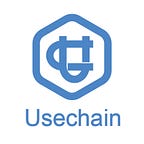A comprehensive technical explanation on the Usechain Ecosystem by Professor Henry Cao
From the earlier article, Prof. Cao provided us an in-depth analysis on the feasible utility that Usechain will be bringing to the ecosystem. In this article, let’s discover how such ecosystem can be established using the unique technology that Usechain has developed.
Firstly, Prof. Cao mentioned that we need to make sure that anyone registered on our blockchain is an authentic person and not a machine. We combine third party verification with social network information to ensure that the identity is real. Penalty agreement will be signed if any fake identity has been reported and the account will be closed.
Subsequently, the digital asset will be turned into a public account and distribute to the community. We incorporate pseudonymous accounts in the following way. One can generate any number of pseudonymous accounts. However, the linkage of these accounts need to be revealed to a group of committee members. Each member does not know the link of these pseudonymous accounts, but if the linkage between these accounts are joined, it can lead to the identity accounts. Therefore, the private information remains undisclosed between users, only the government has the authority to disclose the real identity of the linked accounts under its jurisdiction.
Secondly, we develop a unique and innovative consensus algorithm call Randomize Proof of Work (RPOW). It integrates identity information with Verifiable Random Function to generate a verifiable random number that will be difficult for hackers to attack. The random number can be converted into a predetermined weighting system so that the hashing difficulty will be assigned according to the random numbers. This effectively lower power consumption and increase transaction speed as only a handful of nodes will do the mining.
In addition, we adjust the weights accordingly such that the computational advantages become lesser in the long run. For example, if an individual has never mine before, he or she has a higher probability of mining the next block. In this way, it prevents the concentration of hashing power. Using such methodology, we can scale up to thousands of transactions per second. Although DPOS can achieve the same speed, but the mechanism can be easily corrupted and susceptible to attacks by hackers.
Thirdly, identity allows us to establish a sharing connection using network sharding and transaction sharding. The network sharding is based on the commonalities in identity information while transaction sharding is based on the frequency of transaction between associated parties. This effectively improve the scalability and performance of the network system.
Besides, we develop the structure of self-associated groups using subchains. The use of identity allows us to have more effective communication between subchain accounts and main chain accounts. Hence, utilizing sharding and subchains, we are able to resolve the issue of scalability. On the subchains, we plan to implement Tokenized Proof of Stake (TPOS). Users can buy tokens to enhance their probability of successfully getting the mining reward.
The probability will be adjusted base on past successes so that the concentration of hashing power is not relevant in the long run. Combining with RPOW, the level of decentralization will be customized according to the actual needs in a particular scenario. For example, decentralized exchanges can have specific tokens to speed up execution.
In short, the Usechain technological aspects comprise of identity, efficiency and scalability within its blockchain network. We are committed to develop an effective financial ecosystem as well as other Dapps on the public chain. We are also building a mirror identity parallel world where individuals in the environment can conduct financial and non-financial transactions similarly in the real world. The mission of Usechain is to eliminate financial barrier to entry (e.g. Wall Street) and to promote financial inclusion. Everyone will have access to the financial services and be able to transact freely in the virtual world likewise in reality.
Many people have compared Usechain with GXS and Ontology, but the comparison is superficial. GXS is focused on the transmission of identity information and not the empowerment of identity accounts like what Usechain will do. The mining mechanism of GXS is similar to that of Xunlei as a way to share resources, while Usechain’ s main purpose is to conduct real transactions in a peer-to-peer network. Ontology is more toward the Dapp side and in terms of implementation will have issues in term of global scaling, as they are using NEO platform which is known to be non-scalable.
Reach us at:
Website: http://www.usechain.net/
Weibo: https://weibo.com/usechain
Twitter: https://twitter.com/usechain
Facebook: https://www.facebook.com/UsechainFoundation/
Telegram: https://t.me/usechaingroup
Medium: https://medium.com/usechain/
Bitcointalk: https://bitcointalk.org/index.php?topic=3432061.0
Reddit: https://www.reddit.com/user/Usechain
